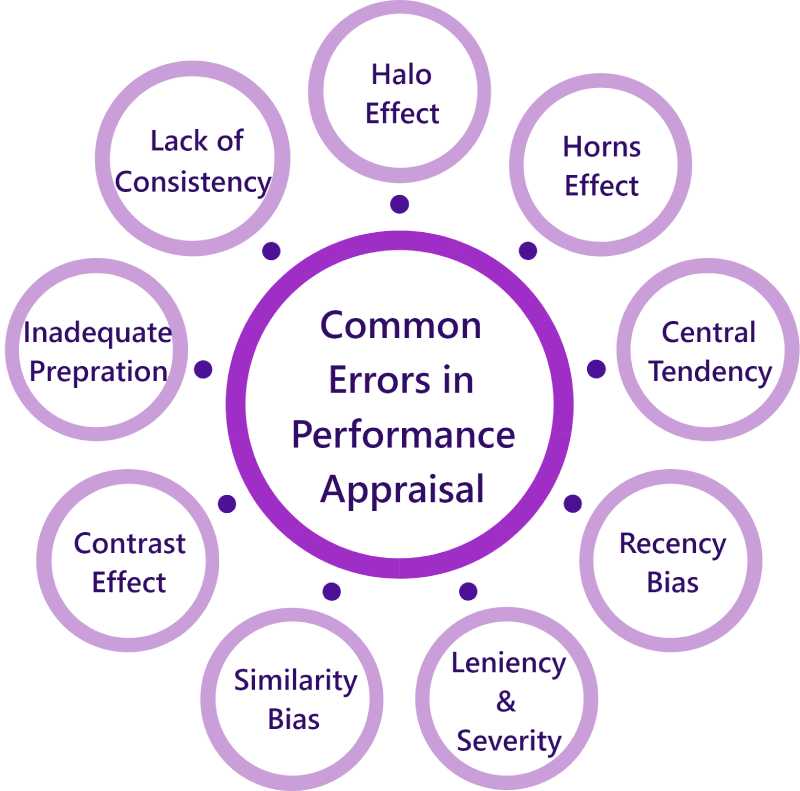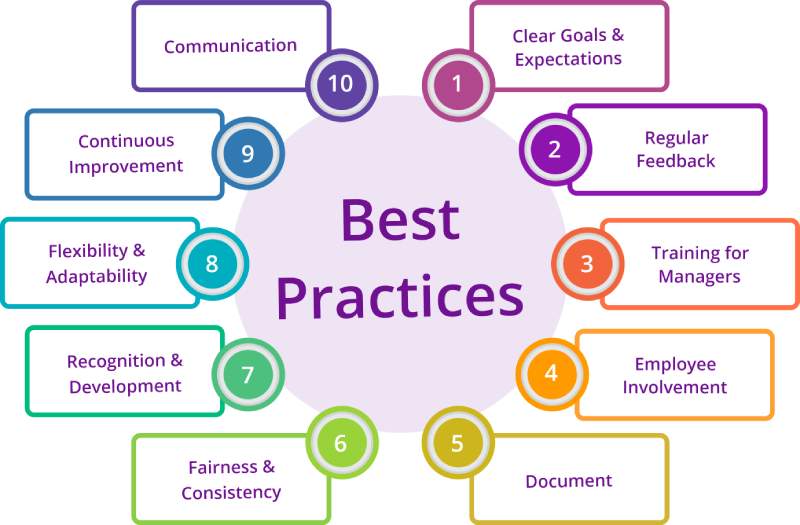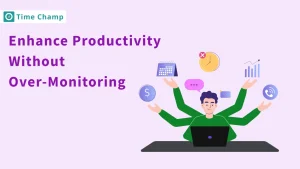A performance appraisal system is a must for every successful business, without any recognition, how long do you think, your most productive and hardworking employee who does their job efficiently every time always before the deadline, keeps themselves updated on what’s going on in the office and the project will stay the same even when they are not getting any recognition or appreciation?
Will they keep dedicating themselves the same way without any recognition or appreciation? And for how long? One month, or maybe a few more months, they’ll start looking for a place that recognizes them for their hard work. This is a crucial stage where you must set up a fair and effective performance appraisal system to make your employees feel like they belong.
What is a Performance Appraisal System?
A performance appraisal system is a process in which organizations can assess the performance of their employees. It is also called as performance review or performance evaluation system and it includes evaluating their performance, offering feedback, establishing future targets, and designing developmental plans.
This process assists the employees in identifying their strengths and areas of development hence assisting them in their career path. Also, it links personal and organizational objectives, increases motivation through rewards, and in the long run, improves organizational performance and employee satisfaction.
Importance of Performance Appraisal in Workplaces
According to a study by ResearchGate, organizations that engage themselves in frequent performance appraisals see their employees’ engagement rising by roughly 20% and productivity by roughly 15% compared to organizations that do not conduct frequent performance appraisals making the employees feel valued and motivated towards work.
Performance appraisals are very important in assessing the efficiency of the employees, planning, and facilitating organizational success.
Improves Productivity
To get a more competent and efficient team, you need to conduct frequent performance reviews, to understand their strengths and weaknesses. And drive your team towards excellence while guiding them with necessary training, and skill development.
Enhances Engagement
Performance appraisals offer chances for the employees and their managers to establish goals and discuss career development. This two-way communication shows that the employer cares for the employees’ input and is willing to assist them in their growth, thus making them more active and satisfied.
Better Decision Making
Essential for making informed decisions about promotions, compensation, and staffing requirements, appraisal data identifies top performers who deserve rewards and employees who need additional training.
Stronger Communication and Relationships
The reviews provide an opportunity for the managers and the employees to interact, hence improving the bonding, confidence, and early identification of problems.
Goal Alignment
During the performance appraisal, the goals and expectations are laid down and aligned with the organizational goals and objectives, guaranteeing that everyone is in harmony.
Spot Talents
The appraisal process identifies potential talent within your organization that may have gone unseen. It helps uncover employees with leadership skills who can be trained to become future leaders.
Keep your teams focused and efficient with Time Champ’s smart monitoring features
Sign Up For FreeBook DemoMethods of Performance Appraisals

Performance appraisals don’t have to be a daunting process. They’re an opportunity to recognize hard work, identify areas for improvement, and help employees grow. Here are seven practical ways you can use to evaluate employee performance while keeping things fair and meaningful.
1. Self-Appraisal: Let Employees Reflect
Self-appraisal gives employees the chance to evaluate themselves. They can talk about what they’ve done well, where they’ve struggled, and what they want to improve. It’s a great way to encourage self-awareness and accountability.
Why It’s Helpful:
- Encourages employees to take ownership of their progress.
- Opens up a dialogue between employees and managers about expectations.
Imagine This:
An employee shares a report they’ve put together, highlighting the projects they’re proud of and suggesting areas they’d like to work on next.
2. Managerial Appraisal: Tried and True
Managers use this classic approach to assess team members based on real, everyday performance. It’s simple, practical, and focuses on direct observations. This method helps managers understand each person’s strengths and challenges, fostering meaningful feedback and stronger connections within the team.
Why It’s Effective:
- Provides feedback from someone who sees the employee’s work regularly.
- Helps identify strengths and areas where coaching can help.
- Picture This:
A manager evaluates an employee’s ability to meet deadlines, maintain quality, and handle daily responsibilities, using examples from their work.
3. 360-Degree Feedback: All-Around Insights
In this method, feedback comes from all directions, managers, peers, subordinates, and even clients. It helps employees see how their work impacts others, highlighting both strengths and areas for growth. By gaining diverse perspectives, they can make meaningful improvements, build stronger relationships, and contribute more effectively to team goals.
Why It Stands Out:
- Encourages teamwork by showing how employees are viewed by their peers.
- Helps employees understand the ripple effects of their actions.
Think About It:
A team leader receives feedback from colleagues about their communication skills while the manager provides input on their ability to meet project goals.
4. Behaviorally Anchored Rating Scale (BARS): Focused on Behaviors
BARS focuses mainly on real, measurable actions that lead to success at work. It’s not about guessing or vague impressions, it’s about recognizing specific behaviors that matter. This makes feedback clearer, fairer, and more actionable for everyone involved.
Why It Works:
- Creates a clear link between actions and outcomes.
- Makes the evaluation process less subjective.
For Example:
A sales rep is evaluated on measurable behaviors like how often they follow up with clients or how well they handle objections during calls.
5. Management by Objectives (MBO): Goal-Oriented
MBO (Management by Objectives) is a method where goals are clearly defined, and progress is measured against them. It’s perfect for roles with specific targets and helps keep everyone focused. With MBO, employees understand exactly what’s expected, making it easier to stay on track and achieve results. It builds a sense of accountability and helps ensure alignment with the overall goals of the company.
Why It’s Great:
- Keeps everyone focused on what matters most.
- Aligns individual goals with the company’s big-picture plans.
Picture This Scenario:
A marketing coordinator is tasked with increasing social media engagement by 15% in three months. Their performance is reviewed based on whether they hit the target.
6. Peer Appraisal: Feedback from the Frontlines
Peers often pick up on things that managers might miss since they work closely with the person every day. Getting feedback from teammates gives a better sense of what’s really going well and what could be improved. It’s a great way to help someone grow and strengthen the team at the same time.
Why It Matters:
- Encourages a culture of honesty and collaboration.
- Highlights strengths in teamwork and interpersonal skills.
Imagine This:
A graphic designer’s teammates share how reliable and creative they’ve been during tight project deadlines.
7. Critical Incident Method: Real Moments That Matter
This method looks at real examples, both positive and negative, to understand how an employee handles the challenges. By focusing on specific incidents, it reveals how they approach problems, learn from setbacks, and grow. It highlights both their strengths and areas where they can improve, offering a more personal and genuine view of their performance.
Why It’s Unique:
- Provides clear examples of what’s working and what’s not.
- Helps employees connect their actions to outcomes.
For Instance:
A manager highlights how an employee handled a tough customer complaint or acknowledges when they missed a key deadline and the impact it had.
Ensure your performance reviews are always accurate and on point with Time Champ’s accurate insights
Sign Up For FreeBook DemoDid You Know?
Performance appraisals have been around for centuries. In ancient China, emperors used a form of performance evaluation to assess the efficiency of their officials. This early system was documented in the Wei Dynasty (220-265 AD).
Use Workforce Monitoring Software
Use workforce and productivity monitoring software like Time Champ to assess your employee’s overall performance and receive detailed reports on how effectively that employee completed a task or project.
These performance insights help you get a better understanding of how employees are contributing to the team’s overall goals. By tracking things like login and logout time, task completion time, efficiency, and productivity, you can easily spot what’s working well and where there’s room for improvement. This data allows you to give meaningful feedback, celebrate achievements, and set realistic goals for growth, all of which make for a more fair and motivating performance review process.
How Performance Appraisal Works
Performance appraisals are not just about forms and meetings, they’re about understanding how your employees are doing, what they have achieved, and how they can grow. Here’s a closer look at how the process typically works, in plain language.
Step 1: Setting Goals
Think of this as mapping out the journey. Right at the start, you set goals, whether it’s meeting deadlines, improving skills, or contributing to team projects. These aren’t just random targets; they’re tied to what the team and company aim to achieve.
Why this matters: When your employees know what’s expected of them, they can focus better and feel confident about their contributions.
Step 2: Ongoing Conversations
No one likes surprises, especially during performance reviews. That’s why regular check-ins are key. These are casual or formal chats where you and your employee discuss how things are going, what’s working, what’s not, and what can be improved.
Tip: Feedback isn’t just about fixing mistakes. It’s also a chance to highlight what your employees are doing well and keep building on it.
Step 3: Gathering Feedback and Data
Here’s where things get objective. As a manager you need to collect information, like results from projects, peer reviews, and even self-assessments, to understand your employee’s performance better.
The human side: Your employee gets a chance to share their perspective. This could be about challenges they have faced, achievements they are proud of, or ways the workplace can support them better.
Step 4: The Big Conversation
The performance appraisal meeting is where it all comes together. This isn’t about a manager rattling off a list; it’s a two-way conversation. Your employees talk about what’s been achieved, areas where they can improve, and the support they need from you to succeed.
What makes it work: It’s not about being judged, it’s about figuring out how your employees can grow and contribute more effectively.
Step 5: Crafting a Plan
Once everything is discussed, the focus shifts to what’s next. Together, you and your employee create a plan. This could involve setting new goals, identifying training opportunities, or tackling new challenges that align with your career aspirations.
Why this matters: It shows that your employees’ growth is a priority, not just for them but for the organization too.
Step 6: Follow-Up and Support
After the meeting, the journey continues. You need to keep checking in to see how things are progressing. You might help remove roadblocks, offer resources, or simply provide encouragement when needed.
Remember: Performance appraisals aren’t one-and-done. They’re part of a bigger process to help every employee succeed.
Common Errors in Performance Appraisals

Performance appraisals are crucial in determining the workforce productivity and any mistake in such a delicate process will result in demotivated employees, legal cases and low performance.
Put yourself in the shoes of the employee who is wrongly evaluated by the employer and is questioning their hard work. How does it feel, unfair right?
To prevent these mistakes in evaluations, remember these points and make sure that they are not committed.
1. Halo Effect
The halo effect is a phenomenon where an appraiser’s general impression of an employee determines the assessment of other aspects of performance. For instance, if an employee has been performing well in one aspect, the appraiser might give the employee high scores in all aspects regardless of the true score.
Impact: This can lead to an inaccurate assessment of the employee’s strengths and weaknesses, skewing the appraisal results.
Solution: Set specific and measurable objectives for each aspect of performance and train the appraisers to avoid the halo effect.
2. Horns Effect
The horns effect is the opposite of the halo effect. It occurs when an appraiser focuses on a single negative aspect or event and ignores the rest of the positive aspects of the employee’s performance.
Impact: This can lead to low ratings that are not deserved and may even lead to employee demotivation.
Solution: Promote fair assessment and the adoption of multiple measures of performance to give a holistic picture of the employee’s performance.
3. Central Tendency
Central tendency is a situation where appraisers give all the employees average performance ratings, and do not give high or low ratings. This is often the case because there is no desire to distinguish between high and low performers.
Impact: This makes it hard to determine who is performing well and who is not, hence poor appraisals are conducted.
Solution: Use a forced distribution method or rating scale that mandates differentiation, and ensures the employees understand how to make proper ratings.
4. Recency Bias
Recency bias is a common appraisal technique where the appraiser relies on the employee’s performance in the last few weeks or months of the appraisal period.
Impact: This can result in bias because the short-term performance, whether good or bad, plays a significant role in the rating.
Solution: Document performance frequently and use the whole appraisal period to make your assessments about the employees. To avoid this type of bias, I would suggest you seek feedback throughout the year and not only at the end of the fiscal year.
5. Leniency and Severity Bias
The leniency bias is a tendency where the appraisers give overly generous ratings while the severity bias is the opposite where the appraisers give overly harsh ratings.
Impact: While leniency can lead to over-estimation of performance, severity can lead to demotivation and disengagement of the employees.
Solution: Schedule calibration meetings that would enable the appraisers to discuss their experiences and agree on the rating scale. It is also necessary to educate the appraisers to avoid relying on their own opinions and to use only the facts.
6. Similarity Bias
Similarity bias occurs when the appraisers tend to rate the employees who are like them in terms of background, interest, or work style.
Impact: This may result in bias and prejudice, which are not healthy for the efficiency and equity of the appraisal system.
Solution: Encourage diversity and inclusion training so that the appraisers can identify their biases and how to overcome them. One way of making sure that the appraisals are fair is by using standard evaluation criteria for the employees.
7. Contrast Effect
The contrast effect is a phenomenon whereby an employee’s performance is evaluated by other employees instead of against a benchmark.
Impact: This can lead to unfair evaluations, especially if the comparison group has high or low achievers.
Solution: Concentrate on the performance of the employee about the set standards and measures rather than comparing him or her with other employees.
8. Inadequate Preparation
Lack of preparation occurs when the appraisers fail to take adequate time to go through the employee’s performance data and feedback before the appraisal session.
Impact: This can lead to rather general and nonconstructive comments that are not useful for the employee’s development.
Solution: Remind appraisers to study performance records, seek feedback from different sources, and document examples of performance.
9. Lack of Consistency
Inconsistency is realized when different appraisers apply different standards and criteria in assessing the employees hence arriving at different and unfair appraisals.
Impact: This weakens the credibility of the appraisal system and may lead to dissatisfaction among the employees.
Solution: Ensure that the appraisal process is standardized through the use of standard criteria and procedures. It is recommended that appraisers undergo training frequently so that they can apply these standards in the right manner.
10. Poor Communication
Here are the main aspects of poor communication:
The appraised outcomes, feedback, and expectations are not well communicated to the employee.
Impact: This can result in confusion, vagueness regarding expectations, and failure to capitalize on the potential for development.
Solution: Instruct appraisers on how to communicate with subordinates and explain the need for positive feedback. Promote active listening and participation during the appraisal meeting to enhance the flow of communication.
You can use Time Champ to avoid all these errors. The top-rated employee monitoring and productivity tracking software in the market. Humans are bound to make mistakes but not software, achieve accurate and real-time report analysis with Time Champ and easily evaluate your employees.
Error-free tracking, smarter management, and enhanced productivity, Time Champ does it all
Sign Up For FreeBook DemoBest Practices for Implementing Performance Appraisal Systems

Here are some of the best recommendations for you to effectively implement performance appraisal systems in your organization.
- Set Clear Goals and Expectations: Before you get started, it is necessary to establish clear goals and expectations for the performance appraisal system. Employees need to know the standards by which they will be judged.
- Frequent Feedback: Rather than waiting a full year for an annual review, giving regular feedback helps individuals understand their performance and whether they are improving or need to improve.
- Training for Managers: Managers should receive training on how to conduct fair and effective performance appraisals. This includes providing feedback constructively and avoiding biases.
- Employee Involvement: Make sure you involve your employees in the appraisal process by setting goals and providing input on their performance. This increases accountability and engagement.
- Documentation: Ensure sure you always maintain records of all performance conversations as well as the results of such discussions.
- Fairness and Consistency: Ensure the performance appraisal process is fair and consistent across all employees. This means using standardized criteria and applying them uniformly.
- Recognition and Development: Performance appraisals should focus on areas for improvement, recognize employees’ strengths, and provide development opportunities.
- Flexibility and Adaptability: Keep your performance appraisal system flexible enough to adapt to changing business needs and employee roles.
- Continuous Improvement: Regularly review and evaluate the system to identify areas for improvement and make all the necessary adjustments needed.
- Communication: Clear communication is definitely a key throughout the performance appraisal process, from setting expectations to providing feedback and discussing outcomes.
By following all of these best practices, you can implement a performance appraisal system that effectively evaluates your employee performance, fosters development, and contributes to overall organizational success.
How Often Should You Run Employee Performance Appraisals?
Usually, performance appraisals are done on an annual basis or even semi-annually depending on the organizational standards. However, if you want to conduct more frequent appraisals for new employees, then you can conduct them at the end of three, six, or nine months. This method is useful when feedback is needed most, for instance when a new employee has made a mistake and can correct it the next time.
It is also important to point out that while performance appraisals can be carried out frequently, it is also important not to overemphasize it in a way that will be stressful to the employees. Use these appraisals when needed to promote development without having to lower performance due to exhaustion.
Conclusion
In conclusion, a performance appraisal system is crucial in enhancing productivity by rewarding good performance, ensuring organizational objectives are met, and promoting change. It fosters communication, trust, and development, thus improving employees’ participation. Feedback is important in ensuring that employees know what is expected of them and what they should do to meet the set goals.
Giving feedback ensures the employee is clear about what to do and what is expected to be achieved, and a good appraisal system produces a motivated workforce which is an essential element for the present-day competitive world.
Want to Achieve Accurate Performance Appraisals Every time?
Start your free trial now to discover how Time Champ can help you master performance appraisals
Sign up for FreeBook DemoFrequently Asked Questions
Performance appraisals are typically done annually, but more frequent reviews, such as quarterly or semi-annually, can be useful, especially for new employees or when feedback is necessary for improvement.
Self-appraisal allows employees to reflect on their own performance and goals, while managerial appraisal involves a manager evaluating an employee’s performance based on their observations and feedback.
Workforce monitoring software, like Time Champ, provides valuable data on an employee’s efficiency, task completion time, and quality of work, which helps managers make data-driven decisions during appraisals.
Training helps managers conduct fair and unbiased appraisals, provide constructive feedback, and set clear goals. It ensures the process is effective and supports employee growth.
When employees feel valued and receive recognition through appraisals, they are more likely to remain with the company. Offering development opportunities also ensures they continue growing in their roles, reducing turnover.






